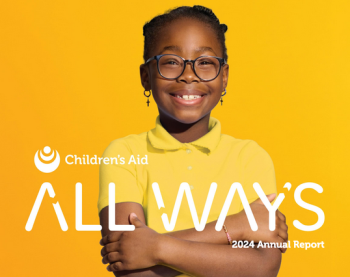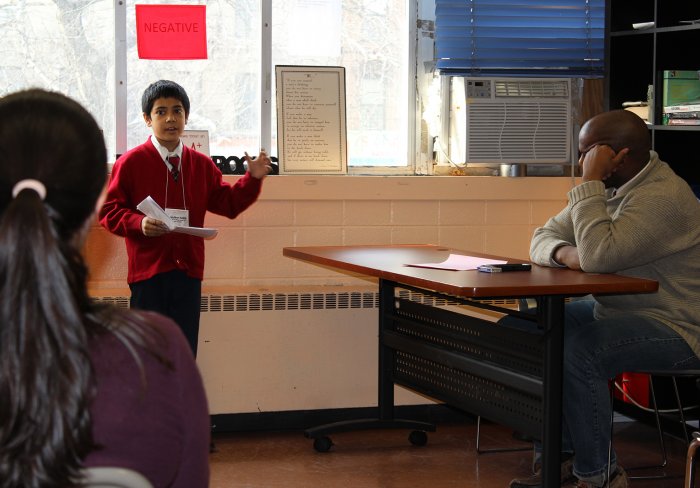After a year of virtual and hybrid learning, many students were ready to learn in person through the city’s Summer Rising program.
Children’s Aid is uniquely qualified to implement Summer Rising – a partnership between the Department of Education and community-based organizations to address learning gaps experienced during a tough year.
“One of the things Summer Rising really attempted to do was serve as a bridge to the last school year,” said Sandra Escamilla-Davies, executive vice president of adolescence. “It was successful in really helping to mitigate all of the barriers that impeded learning.”
The initiative borrows heavily from the community school model, which has been fine-tuned by Children’s Aid. In 1994, we founded the National Center for Community Schools to help schools districts, community partners, and government agencies to develop and strengthen community schools across the country.
Our community schools not only provide academics but also health services, parent engagement programs, and more to position scholars to overcome barriers to academic success.
During this past school year, young people were forced to juggle virtual learning along with stress stemming from family job loss, sickness, food insecurity, and a whole host of issues due to the pandemic. While the summer months are often filled with rest and recreation, research shows that students are at risk of losing knowledge in reading and math when they’re away from the classroom.
To combat this, we offered robust programming to help students catch up.
“A lot of the focus was on the integration of social emotional learning and academics,” Sandra said. “We had really resilient and bright kids, but they just didn’t get enough time on task.”
Children’s Aid’s established commitment to wrap-around services meant that we were ready to mobilize our staff quickly and to make an impact in the lives of kids and families that needed additional support.
We are currently serving 1,074 kindergarten through fifth grade students at eight sites. At our nine middle school sites, we are working with an additional 895 students.
In the morning, students receive instruction from DOE staff. In the afternoon, the focus is on recreational activities and social-emotional learning. Students also go on excursions related to the content they are learning.
At Children’s Aid community centers, high school students receive similar services with a focus on college readiness and employment opportunities. More than 4,800 students are served through initiatives such as the Summer Youth Employment Program and College Persistence.
We’re also integrating services provided by our health and wellness division. Students receive mental health support, and families have access to our Food Box program, which offers fresh fruits and vegetables at a discounted price.
“I have this deep love for our community centers,” Sandra said. “It’s a place where Children’s Aid fully manifests its mission because we’re able to not only work with young people, but also with the whole family unit.”
Children’s Aid knows what each child needs to thrive – quality instruction, healthcare, nutritious food, stable families, and a tight-knit community. Our holistic approach will enable children to recover from a strenuous year and continue to succeed long after.







